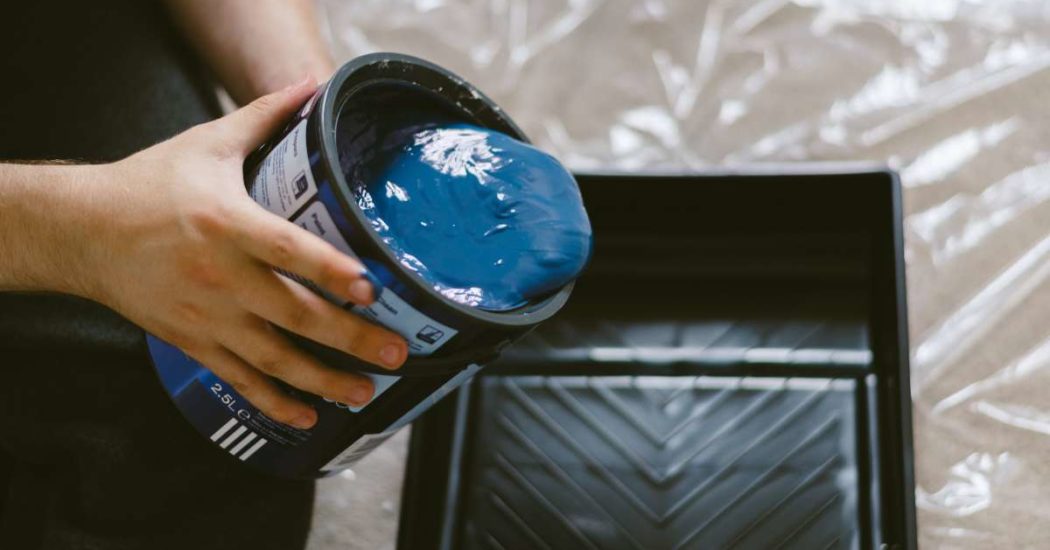
Call Us Today!

Call Us Today!

Painting can be a daunting task, especially if you’re a beginner. It’s easy to get lost amongst all the conflicting advice out there. But don’t worry – we’ve got your back!
In this article, we’ll share some common paint myths and provide you with expert tips on how to get the job done right.
Many DIY enthusiasts believe that adding essential oil to paint will make their walls smell better. Essential oils are not designed to be added to paint and it can cause the paint to become less effective. The essential oils can also cause the paint color to change slightly, resulting in an uneven finish.
The best way to make your home have a pleasant scent is by using scented candles or air fresheners. There are many options available on the market, so you’re sure to find one that suits your taste and needs. Opening windows and doors can also help bring fresh air into the house and make it smell better naturally.
For painting projects, it’s important to use quality products that have been tested for safety and performance. This ensures that the job will be done properly, without any unpleasant surprises down the line. So if you’re looking for a good-smelling home, skip the essential oils in favor of more traditional freshening methods.
Although it’s true that cold weather can impact the curing process and outcome of your paint project, it doesn’t mean painting in the cold is impossible. In fact, there are a few things you can do to make sure your painting project turns out just right, even in colder weather.
One way to ensure success when painting in cold temperatures is to use paint products that are manufactured for colder temps. Some top of the line exterior paint products have a temperature grade of 35° and will fight off moisture twice as fast. 
When painting in cold temperatures, you should also make sure to mix your paints thoroughly before applying them to surfaces. Cold weather can cause paints to thicken more quickly than usual, so mixing them together properly will help ensure an even coating on all surfaces.
Now, we always error on the side of caution when painting in colder temperatures. If you feel that you may be putting your paint project at risk at all, our professional advice is to delay your painting until the weather warms up. It’s always better safe than sorry!
Many people assume that a single coat of primer is all you need to get your walls ready for painting. Unfortunately, this isn’t true and you don’t need to use primer on every area of the surface you are going to paint.
Primer can help make the surface smoother and provide a better adhesion surface for the paint, but it won’t fill in cracks or holes. That’s why professionals recommend taking the time to properly prepare your walls before painting. You should always fill any cracks or holes with spackling compound or drywall joint compound. Once that’s dry, sand it down and wipe off any dust before applying a coat of primer. This will ensure that the paint goes on smoothly and evenly and looks its best when it’s finished.
Additionally, you should always make sure to caulk where needed and scrape any failing paint.
To ensure that your paint job lasts for years to come, use high-quality paints in an appropriate finish for the room you’re painting. Cheap paints may look good when first applied, but they can fade quickly and require more touch-ups over time. Spending a little extra on quality paint will save you money in the long run.
Floor paints are rarely designed to withstand wear and will get dirty and worn quickly under shoes. It’s not just marketers who want to sell you paint for walls, floors, railing, and other elements! You really need different types of paint for all types of surfaces.
Many homeowners believe that choosing a paint color is only a matter of personal preference. However, the professionals know that color choice has implications beyond aesthetics. Paint colors can affect the way people perceive the space, how natural light reflects off of surfaces, and even impact the health of those in the home.
The most important factor to consider when selecting paint colors is natural lighting. Different colors absorb or reflect light differently and can make a room appear smaller, brighter, or more spacious. For instance, lighter shades are known to make a small room seem larger while dark tones tend to create more intimate spaces.
Contrary to popular belief, not all brands of paint can color-match any other. Although some brands use the same pigments, many have their own proprietary formulas or use different suppliers for their colorants. This means that even if two paint colors appear similar in the can, they may not look exactly the same when applied to a wall.
Professional painters understand this difference and know that it’s important to use the same brand of paint when attempting to match an existing hue. Further complicating matters is the fact that different types of sheen can affect how a color appears once applied.
A flat finish will absorb light and make a color look darker, while a high-gloss finish will reflect light and appear lighter on the wall. Many professional painters recommend using a semi-gloss finish for areas prone to moisture such as bathrooms or kitchens, as this is less likely to be affected by humidity and temperature fluctuations.
Though it may be tempting to try and mix different paints together in order to get an exact match, this can often result in an uneven application with visible streaks or brushstrokes.
The best way to achieve consistent results is by using one brand of paint throughout the entire project — preferably one that has been verified by professionals who understand how its colors will react in various lighting conditions and environments.
This isn’t true. Paint can dry out over time, and if it’s not stored properly, it won’t perform as expected when you do go to use it again. Paint can usually last up to ten years when stored properly. If you’re planning on saving paint for later, make sure you store it in a cool, dry place away from direct sunlight. Keep the lid tightly closed so that no air or moisture gets into the container.
Shake up the paint before using it again so that any pigments that have settled are well distributed again. Even if you do store your paint properly, there’s no guarantee that its original quality will remain intact. Over time, solvents can evaporate or break down and cause the paint to thicken or separate.
If this happens, you’ll need to buy more paint to make sure your project turns out right.
Related: Tips on How to Store Leftover Paint with Kind Home Solutions
Despite the fact that many paint companies market their products as ‘Zero VOC’, this does not necessarily mean that the paint is truly chemical-free. Many paints actually contain trace amounts of VOC (volatile organic compound), which can be harmful to both humans and the environment.
In order to confirm whether or not a paint product contains hazardous VOCs, it is important to read the label thoroughly before purchase.
The Environmental Protection Agency (EPA) has set forth regulations regarding the amount of VOCs allowed in paint products, so it is important to check for this information on the label. If a product claims to be ‘Zero VOC’ but does not provide any information about its VOC content, it could be a sign that it is not truly chemical-free.
Additionally, some Zero VOC paints may contain other hazardous chemicals, such as formaldehyde and phthalates, which can still cause health problems even if they are absent from the paint’s list of ingredients. When choosing a paint product, be sure to research each ingredient thoroughly and ensure that all possible hazards are taken into consideration.
This way you can make an informed decision before you buy and avoid any potential risks associated with exposure to these chemicals.
You can approach your next painting project with confidence and a better understanding of how to get the job done right! Want to know more about paints for your home? Contact Kind Home Solutions at 720-807-9068.